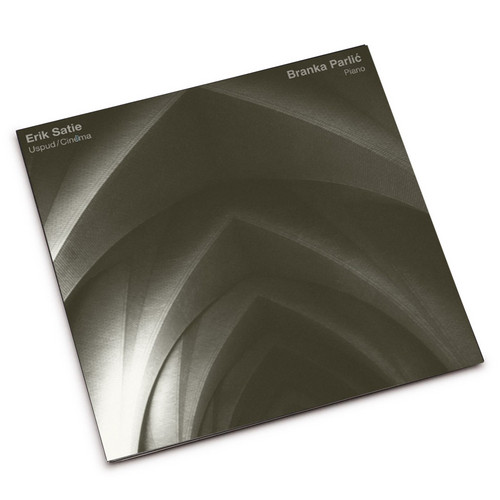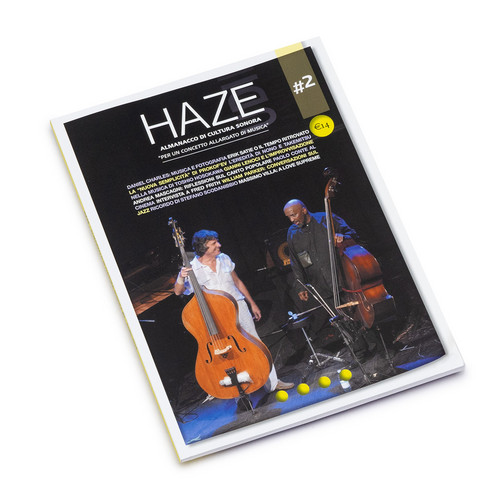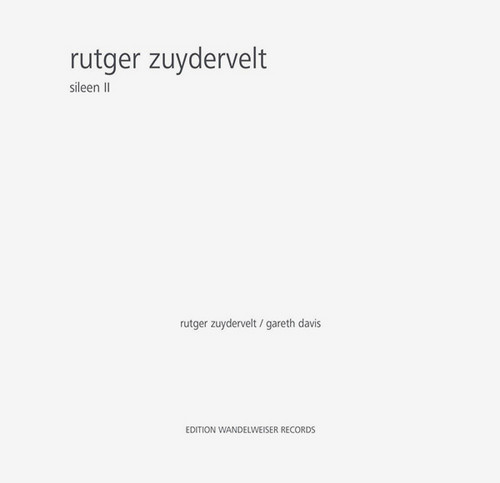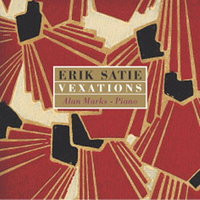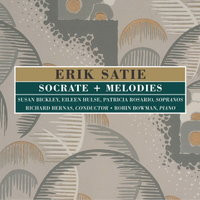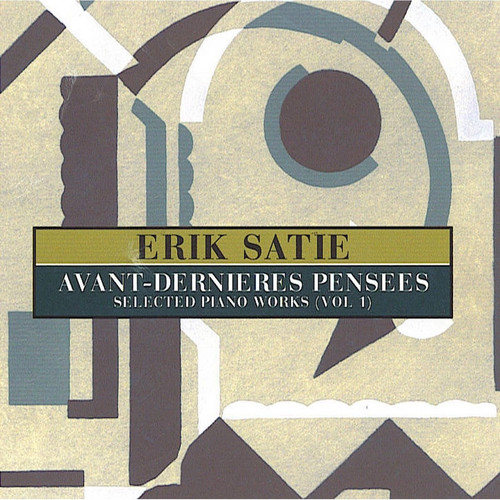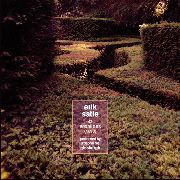Erik Satie
Alfred Éric Leslie Satie was a French composer and pianist. Starting with his first composition in 1884, he signed his name as Erik Satie. Satie was introduced as a "gymnopedist" in 1887, shortly before writing his most famous compositions, the Gymnopédies. Later, he also referred to himself as a "phonometrograph" or "phonometrician" preferring this designation to that of "musician," after having been called "a clumsy but subtle technician" in a book on contemporary French composers published in 1911. Although in later life he prided himself on always publishing his work under his own name, in the late nineteenth century he appears to have used pseudonyms such as Virginie Lebeau and François de Paule in some of his published writings.
Alfred Éric Leslie Satie was a French composer and pianist. Starting with his first composition in 1884, he signed his name as Erik Satie. Satie was introduced as a "gymnopedist" in 1887, shortly before writing his most famous compositions, the Gymnopédies. Later, he also referred to himself as a "phonometrograph" or "phonometrician" preferring this designation to that of "musician," after having been called "a clumsy but subtle technician" in a book on contemporary French composers published in 1911. Although in later life he prided himself on always publishing his work under his own name, in the late nineteenth century he appears to have used pseudonyms such as Virginie Lebeau and François de Paule in some of his published writings.
Satie
** 2026 Stock ** Satie is the point where Erik Satie’s so‑called “furniture music” stops being background and becomes a way of listening to the world. In these recordings, Aldo Ciccolini approaches Satie not as a quirky footnote to Debussy and Ravel but as a composer who quietly rewired 20th‑century music from the inside. The repertoire typically centres on the iconic cycles - Trois Gymnopédies, Trois Gnossiennes and companion pieces like the Nocturnes and Trois morceaux en forme de poire - work…
Uspud / Cinéma
GOD Records is very happy to present its first release from the controversial composer with cult status, Erik Satie. He influenced not only the entire musical language of John Cage but also an entire generation of 20th and 21st -century composers, whose influence remains noticeable today. This unique release presents two of his rather obscure and lesser-known, but unique pieces, both composed for visual arts: a movie (Cinéma) and a ballet (Uspud).Renowned Serbian piano player Branka Parlić, famo…
Haze - Almanacco Di CUltura Di Sonora N.2 (Magazine)
*Italian Language Edition* Un libro/almanacco con cadenza quadrimestrale che raccoglie saggi, interviste, approfondimenti sulla ricerca sonora contemporanea per un concetto allargato di musica. Nel secondo volume: Fred Frith, Paolo Conte, William Parker, Erik Satie, Roberto Masotti, Stefano Scodanibbio, Toshio Hosokawa e altro ancora...
A Mammal’s Notebook: The Writings of Erik Satie (Book)
Humorous and Dadaistic writings from the original Velvet Gentleman and pioneering composer
Socrate
Beautiful rendering of French composer Eric Satie's 1918 masterwork "Socrate", originally for four sopranos and chamber orchestra, here stripped to its essence as a duo with Olalla Aleman on soprano and Guy Vandromme on piano, maintaining Satie's characterist reserve and refinement in the 3 parts: "portrait of socrates"; "banks of the ilissus"; and "death of socrates".
Vexations
Written by eccentric French composer Erik Satie in 1893, the extraordinary score for Vexations is just three lines long, yet a complete performance (840 repetitions) may last for anything between 14 and 28 hours. First performed by John Cage in 1963, this enigmatic, surreal work is today recognized as a musical milestone in the avant-garde canon.
This meditative 69 minute recording features 40 repetitions of the motif, performed by Alan Marks on piano in 1987.
Cubist Works 1913-1924
Cubist Works presents four works composed by Erik Satie between 1913 and 1924 for his collaborations with Pablo Picasso. These include piano and orchestral versions of his scores for the celebrated 'Cubist' ballets Parade (1917) and Mercure (1924), as well as a seldom-heard organ 'diversion', The Statue Found (1923).
The 60 minute anthology also includes The Puppets are Dancing, written for the French Futurist dancer and poet Valentine de Saint-Point in 1913, and the ludic Trois valses distin…
Socrate + Melodies
This acclaimed recording of Erik Satie's symphonic drama Socrate is performed by Music Projects London, and was originally released on Factory Classical. Completed in the spring of 1918, Socrate is a typically eccentric piece from avant-garde composer Erik Satie. Written in three movements for voice (four sopranos) and small orchestra (or piano), the text is extracted from three Platonic dialogues and depicts the last days of the Greek philosopher Socrates, condemned to death for corrupting the …
Dada Works & Entr'actes
A collection of Dada-related works by French avant-garde composer Erik Satie (1866-1925) including music used by Francis Picabia, Tristan Tzara, Kurt Schwitters and René Clair. An enthusiastic Dada activist in Paris between 1920 and 1924, Satie collaborated extensively with Tzara, Man Ray, Pablo Picasso and Jean Cocteau, wrote often in Picabia's journal 391, and became a sworn enemy of the Surrealist faction lead by André Breton.
Performed on piano by Bojan Gorisek, this unique selection include…
Avant-Dernieres Pensees: Selected Piano Works
Avant-Dernières Pensées collects together several of Erik Satie's best known compositions, including the famously poised Trois Gymnopédies, all six haunting Gnossiennes, and Je te Veux. Also included are more experimental pieces such as Descriptions Automatiques and Sports et Divertissements, an extraordinary collection of 21 miniatures from 1914 with illustrations by Charles Martin.
The album also finds space for Satie's single-act, neo-Dada lyric comedy Le Piège de Médusa, comprising 'seven ti…
42 Vexations
16 page booklet including Cage's Place In the Reception of Satie by Matthew Shlomowitz. Erik Satie's 1893 Vexations is musique d'ameublement - literally, "furniture music", the phrase coined by Satie in 1917, where he identifies sound as drapes, tiling, wallpaper - items belonging to the environment and changing it simply by being in it, by actually becoming elements of the space. This recording is the second instalment in a series of furniture music (after Marcel Duchamp's Musical Erratum), and…
L'oeuvre pour piano
A beautiful boxed edition with an outstanding version of Satie's piano music performed by Ciccolini, who is totally inside this music and makes the most of its contrasts of mood and atmosphere. Ciccolini's playing is pliant and graceful, and under his fingers the music seems to breathe and come alive: in many ways this is the most distintive and 'definitive' Satie piano music
Cabaret per Nulla
This album comes from the love for Music. Contemporary music, but also Songs. From the love for History and People. From the observation of a stage before and after a concert. And from Friendship and Collaboration.Erik Satie and John Cage were two musicians of great influence and supreme coherence. In their rigorous path they choose the road to astonishment. On the road to their artistic ideal they met the “music”, when others only loosely saw it. Satie and Cage are, now historically, two compos…

